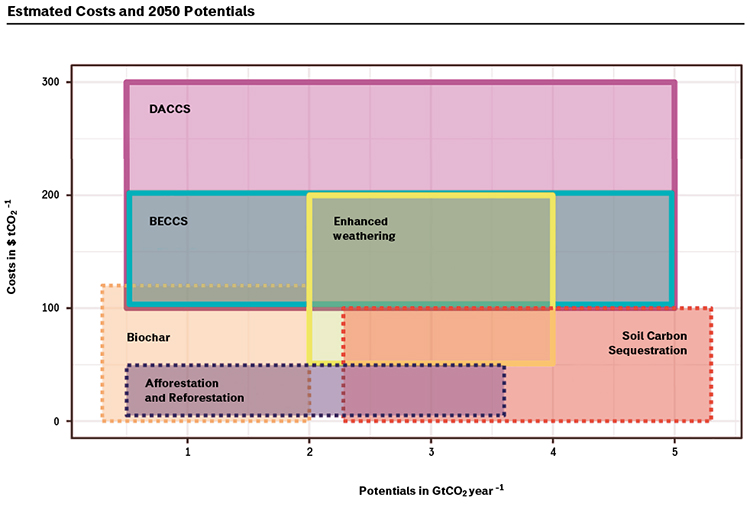 |
|
Photo Credit: MCC Thomas Koehler
|
In October, the IPCC – that under the auspices of the United Nations studies the effects of climate change – published a special Report deemed of utmost importance.
On the one hand, because the Special Report “SR15” reminds us that keeping global warming within 1.5 °C – the highest ambition of the signatory countries to the 2015 Paris Agreement – is still achievable; and on the other because it confronts all adhering governments with the fact that if this target is exceeded, consequences for humans and ecosystems alike, should even half a degree average temperature increase occur, will be very serious indeed.
So far, the actions that have been implemented will lead us to a 3.2 °C warming by 2100: “By 2030, emissions must be reduced by almost half and by 2050 they will have to be zeroed,” explains Sabine Fuss, expert economist in ecosystem services, and one of the leading authors of the fourth chapter of the Report on reinforcing and implementing global responses to climate change threats. According to the German scientist – head of the working group Sustainable Resource Management and Global Change for Berlin’s Mercator Research Institute – the challenge is so complex that it even calls for CDR solutions. The acronym stands for Carbon Dioxide Removal and includes currently available systems as well as those still being researched, to remove CO2 from the atmosphere, thus acting on those emissions that cannot be avoided.
In answer to Renewable Matter’s questions, Fuss ponders the role of such technologies and how their use can be balanced in a cost-benefit perspective, both from an economic as well as an environmental viewpoint.
One of the key results to emerge from the SR15 is that the target to keep global warming within 1.5°C is still achievable. “The coming years will probably be the most important in our history,” claims Debra Roberts, co-chair of IPCC Working Group II. Is SR15 the last port of call before catastrophe?
“By 2030, emissions will have to be reduced by almost half and by 2050 they will have to be zeroed. The Special Report clearly shows that current commitments to reducing emissions in compliance with the Paris Agreement are not enough to reach such targets even if ambitions should rise after 2030, the 1.5 °C goal will still be unattainable.”

What technologies and measures should policy makers favour?
“We weighed up a wide range of actions towards the 1.5 °C target, based on portfolios of extremely varied mitigation options. The IPCC does not mandate any of these but it assesses all of them to let policy makers build their own strategies according to the current state of knowledge, taking into consideration their specific situation and their preferences. Dramatic reductions in the consumption of products requiring huge amounts of soil, energy and other resources, changes of lifestyle, increases in energy efficiency and rapid adoption of low carbon solutions, for instance, can reduce our reliance on CDR technologies.”
As for CDR systems, what is their role in mitigation and adaptation strategies?
“The role of CDR is twofold: in the analysed 1.5 °C strategies they offset residual emissions, and they can take us back to 1.5 °C after temporarily exceeding this target.”
Could excessive reliance on CDR technologies lead Countries to not cut emissions enough? Is there a threshold that should not be exceeded while using CDR technologies?
“I don’t believe that a delay in mitigation is due to the fact that policy makers know that eventually we would be able to resort to CDR. There are other important drivers in this debate that should not be overlooked. The greater the target excess, the more severe the impacts on climate, as the report clearly shows. So, we undoubtedly need CDR systems in addition to our utmost efforts to reduce emissions as much as possible in the short and medium term, and not the opposite.”
In your opinion, what CDR solutions should be preferred?
“Not all CDR options are about large-scale technologies. There is a lot of experience in afforestation, recovery of ecosystems and CO2 soil carbon sequestration via sustainable land management and agroecology, for instance. According to the Report assessments, these are relatively cheap options, so they can be accessed in the short term. However, worries associated with stability of such solutions (due to human influence such as deforestation or natural interference such as forest fires) indicate that other options must also be considered. The Direct Air Capture with Carbon Storage (DACCS), for instance, is still expensive but it uses up less land compared to Bio-Energy with Carbon Capture and Storage (BECCS). In short, the assessment shows that each CDR option has its limits, so we will have to resort to portfolios of options while monitoring side effects.”
Soil Carbon Sequestration (SCS)
Carbon is the essential building block for life on Earth: plants absorb it and store it in their tissue through photosynthesis, animals assimilate it through food. From living beings, carbon is then released into the soil where it is stocked. Through Soil Carbon Sequestration, soil currently represents the third largest carbon sink after oceans and fossil fuels. Increasing organic substance concentration, which has been depleted over the years due to unsustainable agricultural practices, could enhance such amounts. A solution that not only would reduce CO2 in the atmosphere, but would also guarantee benefits for farmers. Indeed, more carbon means less soil degradation, more fertility and better crop yield. For this very reason, SCS helps food security.
And what are the most cost-effective?
“Amongst the assessed CDR options in the Special Report, Soil Carbon Sequestration manages to sequester a tonne of CO2 at the lowest cost and can also have co-benefits in terms of improvement to crop yield. However, soil carbon sequestration is prone to saturation and it is reversible; its development can be limited by land surface on which the various practices can be implemented.”
What are the pros and cons of BECCS and afforestation? The SR15 also recommends policy makers consider people’s needs before deciding to invest in CDR solutions. In what kind of situations could CDR options prove negative for individuals and the environment?
“The obvious advantage is CO2 removal from the atmosphere, but both BECCS and afforestation require vast portions of land to achieve large scale CO2 removals. This can lead to conflicts with other sustainable development targets such as food security for a growing population or the safeguard of the terrestrial biosphere. So, a smaller scale implementation, by benefitting wherever possible from synergistic benefits (for instance, BECCS supply energy, afforestation can be carried out in a way that restores habitats) is a less risky strategy.”
DACCS and BECCS
DACCS (Direct Air Capture with Carbon Storage) systems consist in capturing carbon in the atmosphere and storing it or using it in new industrial processes. Through chemical processes, CO2 is separated from the air and injected into underground sinks or – for instance – used to produce synthetic fuels. However, there are still a few hurdles to overcome, for instance high energy consumption and geological storage sites: possible contamination of water tables, CO2 leaks, earthquakes, pipelines. In BECCS (BioEnergy with Carbon Capture and Storage) CO2 is also captured and stocked: here, though, the “target” carbon is not in the air, but that which is generated through the production of energy from biomass.
In what way will deforestation impact on the amount of CO2 in the atmosphere?
“Deforestation causes about 10% of global emissions, thus significantly contributing to CO2 concentration in the atmosphere. So, avoiding deforestation is an important mitigation strategy that can lead to more substantial benefits depending on how it is implemented.”
What role could solutions such as biochar (charcoal obtained from plant matter pyrolysis), or ocean fertilization have?
“It has been estimated that biochar has significant potential at a reasonable cost, but ocean fertilization is limited not only by uncertainties associated with side effects, but also by a de facto moratorium on its large scale implementation included in the London Protocol in order to prevent sea pollution.”
Ocean Fertilization
Ocean fertilization consists in dumping iron or other nutrients in the upper layers of the oceans in order to stimulate phytoplankton growth, thus improving CO2 absorption in the oceans. In theory, phytoplankton, once it has absorbed carbon dioxide, should die and sink to the seabed. However, experiments highlighted that the amount of carbon actually sequestered is low because a great amount of CO2 is released into the food chain. Furthermore, risks associated with marine ecosystem health have also been identified.
MCC – Mercator Research Institute on Global Commons and Climate Change, www.mcc-berlin.net
IPCC, Special Report Global Warming of 1.5 ºC; www.ipcc.ch/sr15

